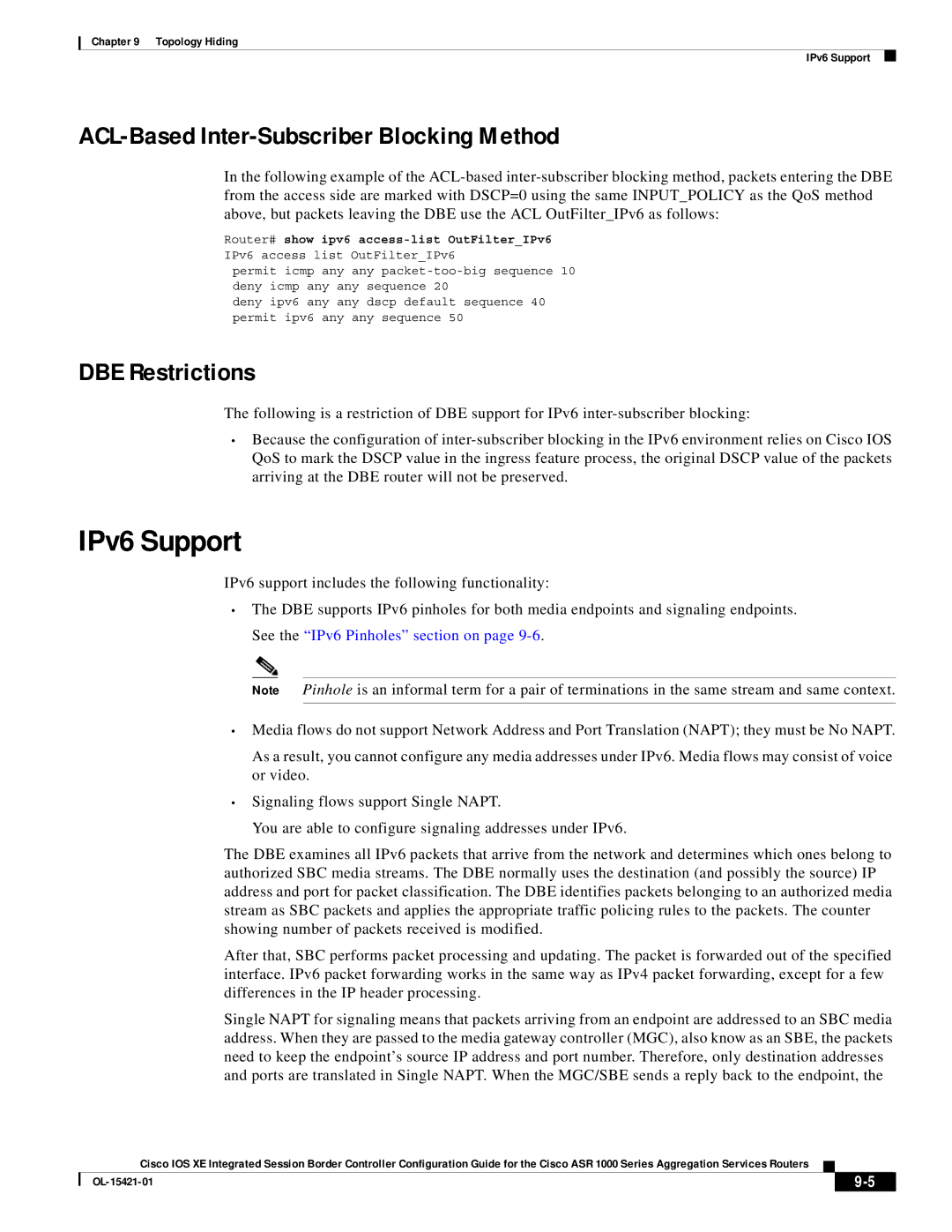
Chapter 9 Topology Hiding
IPv6 Support
ACL-Based Inter-Subscriber Blocking Method
In the following example of the
Router# show ipv6
permit icmp any any
deny ipv6 any any dscp default sequence 40 permit ipv6 any any sequence 50
DBE Restrictions
The following is a restriction of DBE support for IPv6
•Because the configuration of
IPv6 Support
IPv6 support includes the following functionality:
•The DBE supports IPv6 pinholes for both media endpoints and signaling endpoints. See the “IPv6 Pinholes” section on page
Note Pinhole is an informal term for a pair of terminations in the same stream and same context.
•Media flows do not support Network Address and Port Translation (NAPT); they must be No NAPT.
As a result, you cannot configure any media addresses under IPv6. Media flows may consist of voice or video.
•Signaling flows support Single NAPT.
You are able to configure signaling addresses under IPv6.
The DBE examines all IPv6 packets that arrive from the network and determines which ones belong to authorized SBC media streams. The DBE normally uses the destination (and possibly the source) IP address and port for packet classification. The DBE identifies packets belonging to an authorized media stream as SBC packets and applies the appropriate traffic policing rules to the packets. The counter showing number of packets received is modified.
After that, SBC performs packet processing and updating. The packet is forwarded out of the specified interface. IPv6 packet forwarding works in the same way as IPv4 packet forwarding, except for a few differences in the IP header processing.
Single NAPT for signaling means that packets arriving from an endpoint are addressed to an SBC media address. When they are passed to the media gateway controller (MGC), also know as an SBE, the packets need to keep the endpoint’s source IP address and port number. Therefore, only destination addresses and ports are translated in Single NAPT. When the MGC/SBE sends a reply back to the endpoint, the
Cisco IOS XE Integrated Session Border Controller Configuration Guide for the Cisco ASR 1000 Series Aggregation Services Routers
|
| ||
|
|
